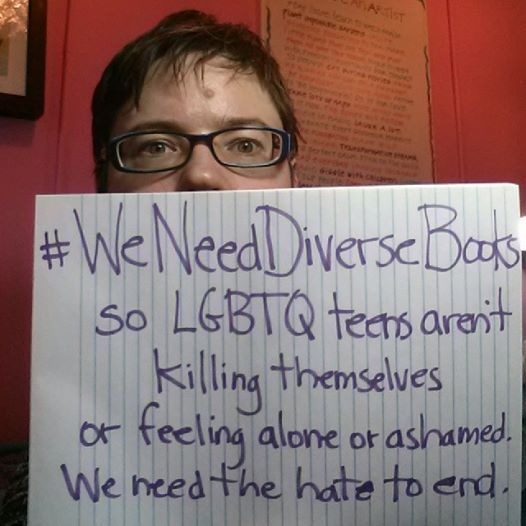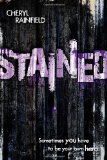Cheryl Rainfield's Blog, page 55
May 4, 2014
Win a copy of STAINED…
and other new YA books at a contest over at Adventures In YA Publishing. You have 27 more days to enter. 
The books you can win are:
These Gentle Wounds by Helene Dunbar
Wish You Were Italian by Kristin Rae
The Eighth Guardian by Meredith McCardel
Killing Ruby Rose by Jessie Humphries
The Eighth Guardian by Meredith McCardel
and
Stained by Cheryl Rainfield (me). 
May 1, 2014
#WeNeedDiverseBooks because….
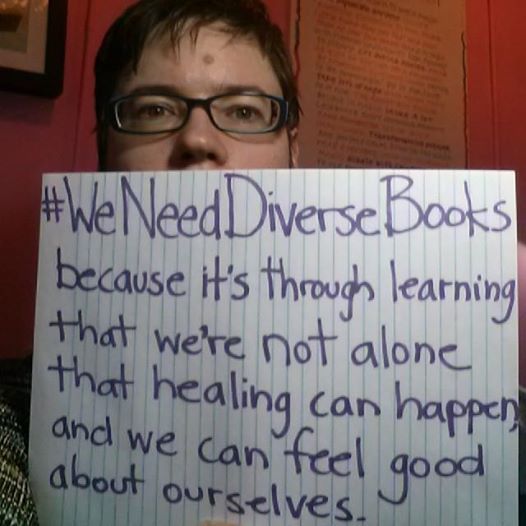
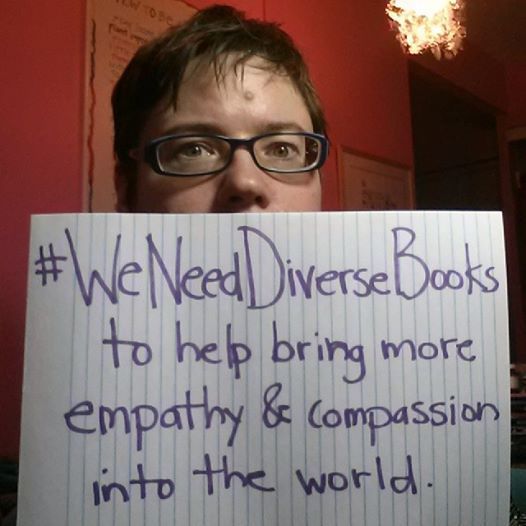
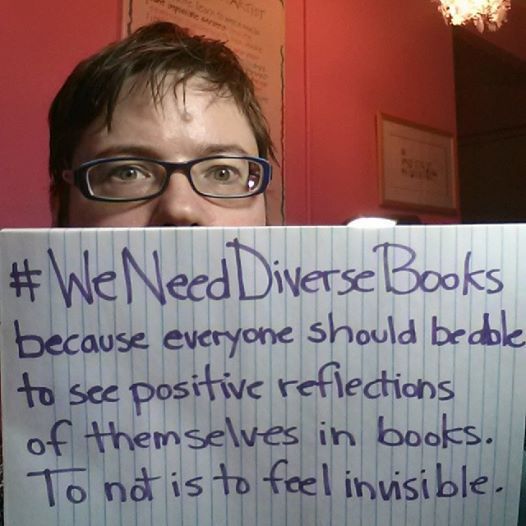
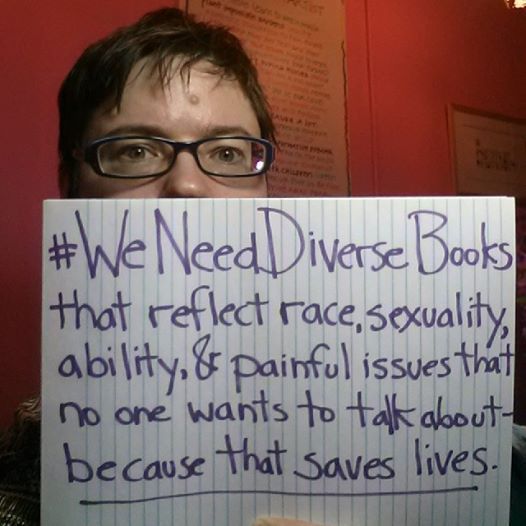
I believe so strongly that we need diversity in books. I hope you do, too.
Join in the discussion through the Twitter Chat on May 2nd at 2pm (EST) using the hashtag #WeNeedDiverseBooks. Share your thoughts on the issues with diversity in literature and why diversity matters to you.
There are a ton of YA and kidlit authors, industry professionals, and readers taking part in this. I hope you’ll check out some of the books. There are so many diverse, important books that can help bring greater empathy to our world.
April 25, 2014
If you’re stressed, or in distress or crisis, see this fantastic article by Toronto psychotherapist Jo-Anne Beggs
for some concrete techniques to help you get through–without doing anything to make it worse. These are techniques that actually help!
And if you’re looking for a therapist in Toronto or Mississauga, I highly recommend her! She’s one of the most compassionate, warm-hearted, good people I know, and she’s got a ton of skill and experience.
April 24, 2014
Writing Heals: My Poem for Poem In Your Pocket Day

Silvia Sala / Foter / Creative Commons Attribution-NonCommercial-NoDerivs 2.0 Generic (CC BY-NC-ND 2.0)
When I don’t write
words get stuck in my throat,
tightening my muscles.
They curl up in my lungs
Making it hard to breathe
a slow, painful strangulation
sucking the life out of me.
Silence does that.
I had so many years of terrified silence
So many years of threats
to my life
Saw so many people in pain
and fear
the way I was
with no way to know
that they weren’t alone.
So now when my words
uncoil on the page,
become books that reach others
and I hear back how grateful they are
My throat loosens
My breath eases
My heart feels full,
And healing happens.
© Cheryl Rainfield, April 2014
April 22, 2014
Enter to win an audiobook copy of STAINED today only (9 hours left)
Enter to win a downloadable audiobook copy of STAINED (by me) today only (9 hours left!) on the lovely Jennifer Fischetto’s blog.
You may want to check in every day for the rest of the month to win other YA books as well.
April 11, 2014
Such an honor to be recognized…in Writer’s Digest Magazine!
 I’m so thrilled to hear that Writer’s Digest Magazine (in the May/June issue) gave me A+ for social media for teens!(beaming and beaming) What an honor, and such a good feeling!
I’m so thrilled to hear that Writer’s Digest Magazine (in the May/June issue) gave me A+ for social media for teens!(beaming and beaming) What an honor, and such a good feeling!
And Debbie Ohi’s (a fellow Toronto writer, illustrator, and friend) website is in the top 101 websites again (and so well deserved).
Thank you so much to Maureen L McGowan for letting me know!
I get a digital subscription to Writer’s Digest magazine, but I don’t have the May/June issue yet. And I so prefer paper magazines any way; they’re so much easier to read, what with the sidebars and such. I have to go buy myself a print copy! (grinning)
March 21, 2014
YA Author Cheryl Rainfield on Writing LGBTQ Characters In YA Fiction
I spoke at York University the other day on writing LGBTQ characters in YA lit. It was a fantastic class, and I Loved hearing from so many of the students afterwards about how I am their new role model, hero, and inspiration! (beaming) I focused on SCARS because that is the book of mine that they all read for their class. Here are the main points about writing LGBTQ characters in YA lit that I shared.
I’m queer. I felt so alone and in so much pain and shame growing up, about so many things—-being queer, the abuse and torture I was living through, and the way I coped with it (self harm). I think pain gets so much worse when we feel alone or like we’re the only one who’s been through something. So it’s really important to me to put queer characters in all my books, whether they’re the main character like Kendra in SCARS, or whether they’re a secondary character, like Rachel (Caitlyn’s best friend) in HUNTED, or a walk-on character, like Charlene, Sarah’s friend, who comes out in STAINED, or the older lesbian couple who help save Sarah when she first escapes. I think having LGBTQ characters in books as regular characters who just happen to be queer, who are not focused on coming out, helps reduce homophobia, normalize being gay, increase acceptance, and help people who are queer feel less alone when they see themselves reflected. We all need positive reflections of ourselves in books. It’s similar to me putting people of color in every book–it’s the world we live in. And it’s important to me to also include survivors of various abuse, trauma, and oppression, people with mental health issues or ways of coping with trauma, and strong-girl characters in my books, since I think those are all under-represented, and they’re things that have affected me and I care about them deeply. I think books are powerful ways to increase compassion, acceptance, understanding. It’s also just part of our real world that we live in. I hope more and more authors (and publishers) will continue to include LGBTQ characters, people of color, strong-girl characters, and survivors in their stories.
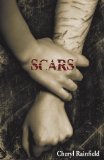
 I made Kendra in SCARS so sure of her sexuality, of liking other girls, because I think many people who are queer often know that they are at a young age, just as many people who are heterosexual know at a young age that they are. Heterosexual people don’t usually (if ever) question why they’re heterosexual or when they became heterosexual. Heterosexuality is rewarded, encouraged, and expected in our society. I think the only reason that some queer people question their sexuality is the strong homophobia in our society–that if we are out we can get kicked out of our families, accosted on the street, bullied, abused, beaten up, raped, even murdered for who we love. I knew at a young age that I was queer, but I didn’t have the words for it (I was kept very isolated, and I never heard anyone talk about being queer). I remember saying repeatedly when I was maybe five or six and older that I would never marry. I meant that as I would never be with a man, because when I was a child lesbians and gay men didn’t have the right to marry, the way we do now in Canada. It wasn’t until I was a young teen–maybe thirteen or fourteen or so–that I found my first reflection of who I was in The Toronto Women’s Bookstore–a feminist bookstore that has sadly since closed–when I came across a record by Alix Dobkin called “Living With Lesbians.” I felt so ashamed buying the record, having to show the woman at the checkout what I was buying–but also so relieved and excited. Someone else had gone through what I was going through, and was okay. I wasn’t alone.
I made Kendra in SCARS so sure of her sexuality, of liking other girls, because I think many people who are queer often know that they are at a young age, just as many people who are heterosexual know at a young age that they are. Heterosexual people don’t usually (if ever) question why they’re heterosexual or when they became heterosexual. Heterosexuality is rewarded, encouraged, and expected in our society. I think the only reason that some queer people question their sexuality is the strong homophobia in our society–that if we are out we can get kicked out of our families, accosted on the street, bullied, abused, beaten up, raped, even murdered for who we love. I knew at a young age that I was queer, but I didn’t have the words for it (I was kept very isolated, and I never heard anyone talk about being queer). I remember saying repeatedly when I was maybe five or six and older that I would never marry. I meant that as I would never be with a man, because when I was a child lesbians and gay men didn’t have the right to marry, the way we do now in Canada. It wasn’t until I was a young teen–maybe thirteen or fourteen or so–that I found my first reflection of who I was in The Toronto Women’s Bookstore–a feminist bookstore that has sadly since closed–when I came across a record by Alix Dobkin called “Living With Lesbians.” I felt so ashamed buying the record, having to show the woman at the checkout what I was buying–but also so relieved and excited. Someone else had gone through what I was going through, and was okay. I wasn’t alone.
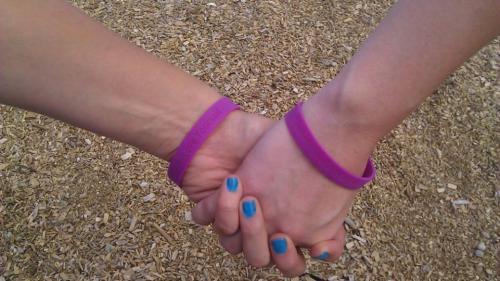
Photo by Ashlee
I chose to make Kendra queer and have it just be normal for her because I wanted to help LGBTQ readers feel less alone, and I wanted to reduce homophobia for heterosexual readers and encourage greater acceptance. I especially didn’t want SCARS to be a coming out book; I wanted to make it easier for people who weren’t queer to see it as normal, as just part of our world, though I did have the mother have some problems with Kendra being queer because that is also realistic. Also, for a while almost every LGBTQ book or movie I picked up seemed to be a coming out story, as if that’s the only story there can be with a queer character, our difference. We deserve more than that; we deserve to have queer characters be the heroes of any story—-a fantasy, sci-fi, suspense or thriller, mystery, romance, or coming of age story–where they have strengths and weaknesses that aren’t about those characters being queer. As long as there is homophobia and hate in this world, we still need coming out stories. We need to know we’re not alone in our struggles and pain as we fight against hate. But coming out stories shouldn’t be the ONLY stories that we find about LGBTQ people.I’ve mostly had acceptance or support from the publishing industry about my queer characters, BUT I did have some pushback recently, with a book I don’t yet have a contract for. The main character is queer, just like Kendra in SCARS, and I was asked by a publishing industry person if I would make my character straight–with no explanation about why. I’m assuming the rationale was that it will sell better if it’s a heterosexual main character. I have not changed the sexuality of my character; it’s important to me to have some queer main characters, and it is part of who my character is in the story. I can’t see a publishing industry person asking me to make my heterosexual main character queer. I think it’s just part of the homophobic society we live in.
Some readers ask me if I or Kendra are queer because of being sexually abused. My response to that is: No. If every girl or woman (or boy) who was sexually abused or raped became queer, then 1 in 3 women would be queer, and 1 in 6 boys. And we know that isn’t so. Also, personally, I had both male and female rapists, and having female rapists didn’t stop me from being attracted to women. Being raped or sexually abused doesn’t make you queer.
My books are my way to make a positive, healing difference in this world, and my being a writer who many people read also allows me to have a wider audience for things like my It Gets Better video. It’s so important to me to help support the LGBTQ community, survivors of abuse and rape, bullying, people who’ve used self-harm or attempted suicide, people who’ve been through oppression or trauma. Those are all things I know from the inside out; so painful. We all need support.
And, though I only saw this great video today by the Gay Women’s Channel and didn’t include it in my talk, I think it demonstrates what I’m talking about–the importance of normalizing being queer, of breaking through homophobia and seeing each other as people, not as “other.” For this video, the Gay Women’s Channel got some mildly homophobic volunteers to meet with gay people and have a safe, platonic hug and mini discussions. I love seeing change happen, and I think talking helps it happen–face-to-face, through books and videos and movies, and through the net. Each of us can make a difference. Let’s keep making positive change happen.
March 20, 2014
Scrivener (a great tool for writers) on sale 50% off for only 6 more hours
I just bought Scrivener for Windows on sale for $20 on AppSumo!! (It’s normally $40 USD. They also have it for Mac on sale for the same price.) I’ve heard so many other writers I trust rave about Scrivener, but I was on the fence; I like Word, and I have some separate programs that do some of the things Scrivener does. But I love the idea of all my material for a novel in one place, and also some of the other things Scrivener lets you do (see your novel in outline quickly, move chapters around easily, etc etc).
The sale price pulled me in. There’s about 6 hours left to the sale if you’re interested. I wanted to let everyone know, because I’ve been looking for Scrivener to go on sale for years, and I’ve never seen it on sale except for NaNoMo writers (which I don’t do).
March 19, 2014
Guest Post on Human Trafficking: Jasmine of Berlin by author S. Bergstrom
Today author S. Bergstrom talks to us about human trafficking–an inhumane practice that happens all too often–as well as his new book The Cruelty. Human trafficking is very close to what I went through myself as a child and teen through the cult, so it really affects me. No human should be treated this way. I’m very glad S. Bergstrom is speaking out, and helping people become more aware through his book. I’m glad to be part of his tour. I hope you are moved by his post, as I was.
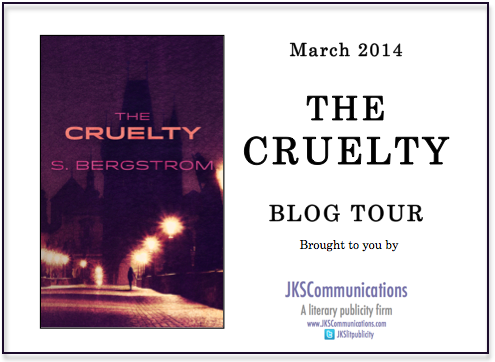
Jasmine of Berlin
by S. Bergstrom, author of The Cruelty.
The girl wears her hair in schoolgirl braids tied with pink ribbon. An attempt, I suppose, to look even younger than her seventeen or eighteen years. Despite it being a brutally cold Berlin night in February 2012, she wears a very short skirt and I can see bruises the color of eggplant on her bare legs.
After scanning the bar for a few seconds, the girl takes a seat next to me. The bartender gives her a look and doesn’t bother asking if she wants anything to drink. She is, evidently, known here. Jasmine is how she introduces herself, and that’s what I call her for the remainder of the ten second conversation that follows. If possible, her German is more basic than mine, and filled with enough Russian vowels and rolled r’s that I have to assume she’s from one of the former Soviet Republics.
“Why you here alone?” she asks.
“Waiting on a friend,” I answer. “Why are you here alone, Jasmine?”
She looks at me in a way that means I’m impossibly stupid or impossibly cruel for making her say it out loud. “Sex for money,” she says. “Do you want? Very cheap.”
I tell her no and reiterate that I’m waiting for a friend. She gets up without another word and approaches two middle-aged business men drinking at the other end of the bar. No more than a minute passes before she leaves with one of them, the man’s arm around her waist.
This is not a remarkable story. I’m not even sure I mentioned to the friend who came in a few minutes later. To men especially, it’s all pretty familiar. Travel enough by yourself and approaches such as these happen too often to count. It happens not just in Europe, of course, but in North America, too. Miami. New York. Toronto. Topeka. But it’s precisely because it’s unremarkable and universal that it’s so tragic.
Jasmine—or Anna, or Olga, or Sveta, or whatever her real name is—did not end up in Berlin by accident. If you travel extensively in this part of the world, you know it’s not too far a logical leap to guess at the story that came before her arrival in Germany’s capital. Jasmine was, very likely—in fact, almost certainly—the victim of human trafficking.
Trafficking in human beings for both sex and labor happens everywhere, but it’s most obvious in places like Berlin where the impoverished East borders the relatively more prosperous West. Class distinctions there are sharp and it’s a mecca for immigrants, mainly from Turkey, but from former Soviet satellite states, too. It’s these latter countries—particularly the poorest of the poor, such as Moldova—that are the epicenters of human trafficking in Europe.
In such countries there is little industry or infrastructure. But what these places do have in abundance is young people on whom human traffickers prey by promising them lucrative, easy work abroad. It often begins with the offer of a waitressing gig in Dubai, or modeling job in Paris. Such connections are often made through brokers who advance sums of money to the young woman’s family. Sometimes it’s even a relative—an uncle or cousin abroad who’s made arrangements with his acquaintances there.
What happens next varies in specifics, but typically ends the same way. Upon arriving in a new country, the victim’s passport is confiscated and the true nature of the work she’ll be doing is finally disclosed. Leaving is impossible without her passport, and threats to quit are countered by threats to either her life, or the lives of her family back home. There is also the issue of spurious “debt,” which the victim has accrued both through the advance often paid to her family, and the purported costs of transport, lodging, and other “fees” such as bribes to officials for work visas which almost never materialize. This debt, along with the interest it accrues, is typically so inflated that there is no realistic way for the women to repay it.
Those brave enough to escape this life often find themselves victimized again by the legal system in their host country. While tremendous gains have been made in much of Europe in recognizing these women as victims rather than criminals, this is not the case in many Middle Eastern or Asian countries. Branded as criminals both for the work they performed and their lack of documentation, the victims of human trafficking often face prison sentences and further abuse at the hands of the police.
The idea of slavery is, today, almost universally repellent. But then, so is war. So is starvation. Yet these things go on anyway. Some time ago, when I approached a magazine to write an article about sex trafficking, the editor’s face contorted in visible disgust. “No one wants to read about that,” she said. I explained to her that according to the United Nations, there were more human beings enslaved in the 21st Century than there were at the height of the Atlantic slave trade. She only shrugged. “My readers can’t do anything about it,” she said.
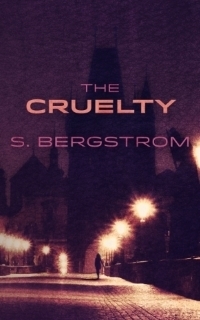 Mostly, that editor is right. Human trafficking, whether for sex or labor, is a decentralized problem. There is no single nation from which the women come, and no single nation that is their destination. Thankfully, through the attention of the UN and many NGOs, reforms are taking place worldwide that enact tougher penalties for the traffickers themselves while providing support for the victims. We can only encourage the spread and strict enforcement of these laws, all the while raising awareness whenever possible and with whatever media is at hand. Is that enough? Will such reforms work? I don’t know. Neither does anyone.
Mostly, that editor is right. Human trafficking, whether for sex or labor, is a decentralized problem. There is no single nation from which the women come, and no single nation that is their destination. Thankfully, through the attention of the UN and many NGOs, reforms are taking place worldwide that enact tougher penalties for the traffickers themselves while providing support for the victims. We can only encourage the spread and strict enforcement of these laws, all the while raising awareness whenever possible and with whatever media is at hand. Is that enough? Will such reforms work? I don’t know. Neither does anyone.
I thought about Jasmine as I wrote my novel The Cruelty, where the woman I knew for all of ten seconds became Marina, guide and benefactor to my protagonist. It was a hopeful gesture, but ultimately a meaningless one. In the book, Marina survives. She defeats the man responsible for her bondage, triumphing over him. But in real life I’m not sure Jasmine fared so well.
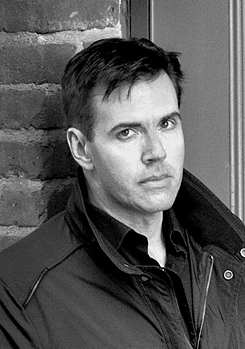 S. Bergstrom is a writer and traveler fascinated by the darker, unloved corners of world’s great cities. His books and articles on architecture and urbanism have been widely published in both the United States and Europe. The Cruelty is his first novel. He can be reached at sbergstrom.com or on Twitter @BergstromScott
S. Bergstrom is a writer and traveler fascinated by the darker, unloved corners of world’s great cities. His books and articles on architecture and urbanism have been widely published in both the United States and Europe. The Cruelty is his first novel. He can be reached at sbergstrom.com or on Twitter @BergstromScott
When her diplomat father is kidnapped and the U.S. government refuses to help, 17-year-old Gwendolyn Bloom sets off across the dark underbelly of Europe to rescue him. Following the only lead she has—the name of a Palestinian informer living in France—Gwendolyn plunges into a brutal world of arms smuggling and human trafficking. As she journeys from the slums of Paris, to the nightclubs of Berlin, to the heart of the most feared crime family in Prague, Gwendolyn discovers that to survive in this new world she must become every bit as cruel as the men she’s hunting.
You can find S. Bergstrom on:
Author Website
Twitter
Facebook
Instagram
Goodreads
Virtual Tour Page
March 18, 2014
I will be speaking this Thursday at York University on Writing LGBT Characters in YA Literature


I’m honored to be speaking to Professor Cheryl Cowdy’s class this Thursday on writing LGBTQ characters in YA fiction. It’s really important to me to have a queer character in every book I write, whether it be the main character, like Kendra in SCARS, or a secondary character, like Caitlyn’s best friend Rachel in HUNTED, or Sarah’s friend Charlene in STAINED who comes out, or the walk-on characters in the older lesbian couple who help save Sarah after she first escapes. I think having queer characters who are queer where that’s not the issue in the book, where it’s not a coming out story, is really important; it helps normalize queer characters, helps reduce homophobia and increase acceptance, helps LGBT people feel less alone. We all need positive reflections of ourselves in books and movies; to not have that is to feel invisible. So, just as it’s important to me to have queer characters in every book, I try to also put people of color in every book (whether it’s a love interest or a walk-on character), and I put survivors of trauma or oppression in every book (it’s such a part of who I am). I’m sure over time I will continue to expand this.
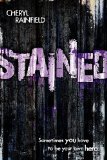

I think LGBT people deserve to have stories where queer characters are the hero of that story–whether it be sci-fi, fantasy, suspense and thriller, or a quiet story–heroes that they can identify with and even look up to. And I think that having that will help everyone, not just the LGBT community. Because LGBT people are a part of this world, and we all need to live in harmony, accepting and appreciating each other. And i believe that books are a powerful part of change, acceptance, and greater compassion.
I will be talking about this, and other issues with LGBT characters in YA fiction, as well as answering questions from the class on Thursday. I’m looking forward to it.


